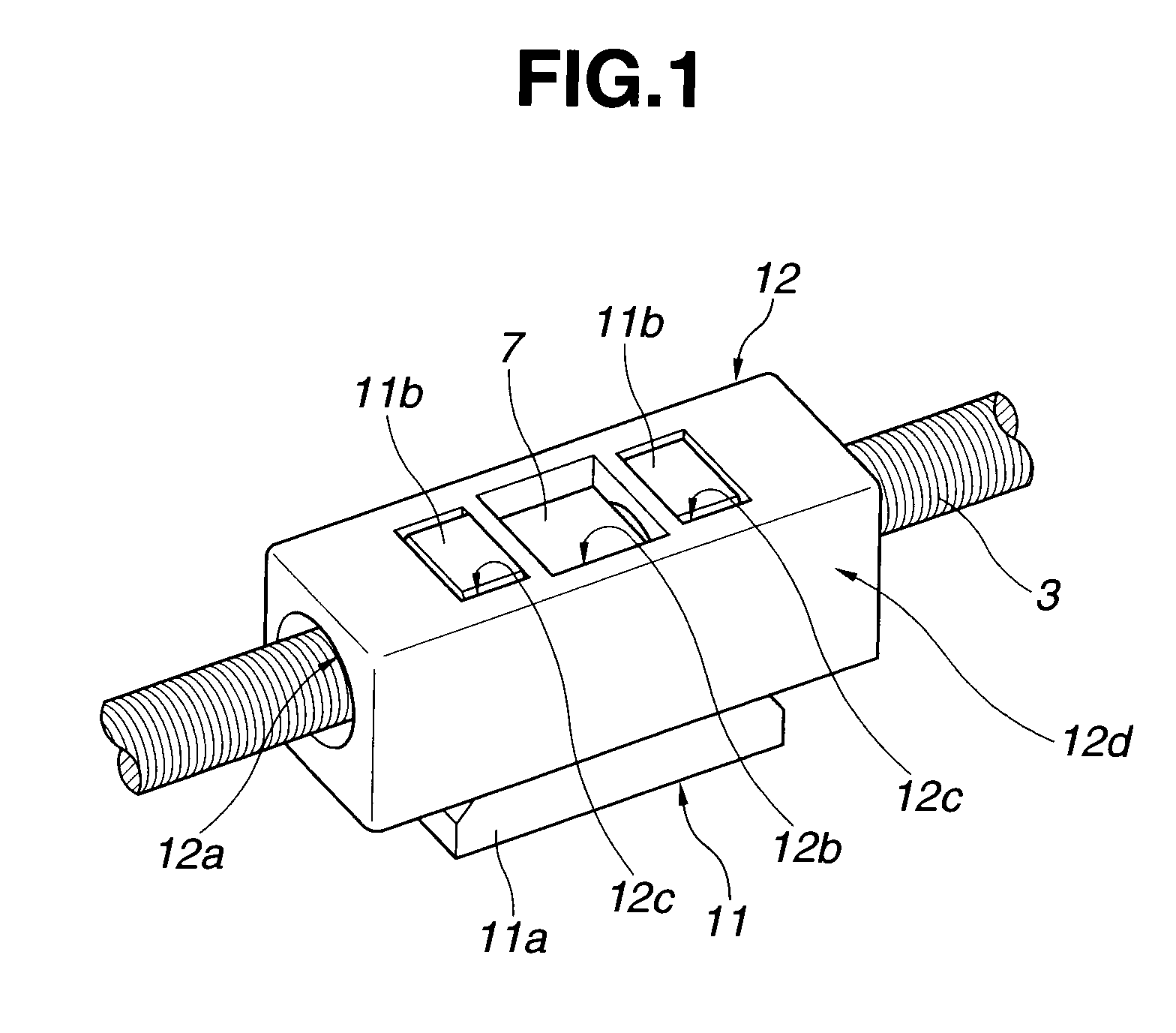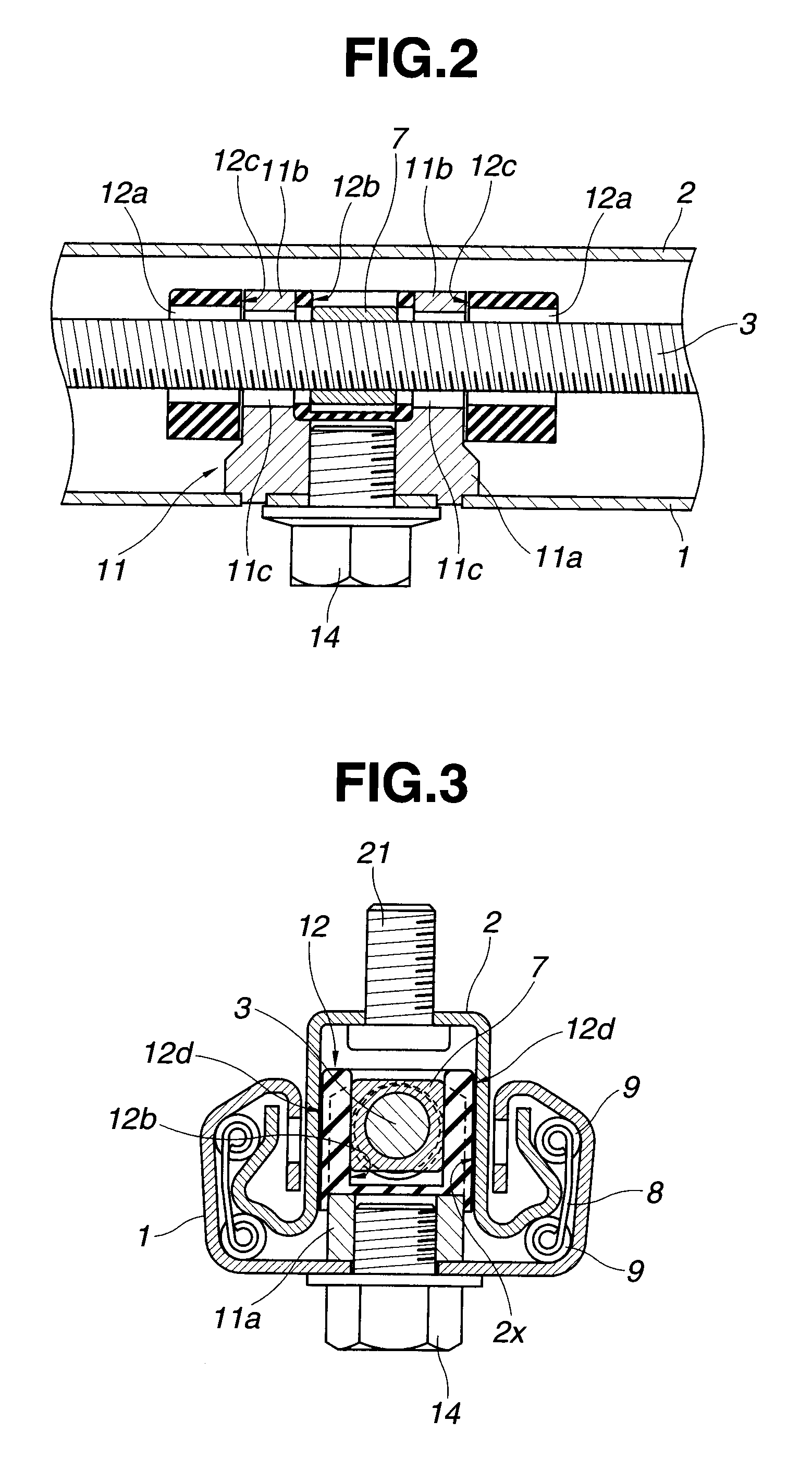Electrically operated seat slide apparatus
a seat slide and electric technology, applied in the direction of machine supports, movable seats, roofs, etc., can solve the problems of increasing the number of parts by the number of parts corresponding to the push-nut, the screw shaft is buckled when receiving compression, and the load receiving member is bent and getting off from the upper rail. , to achieve the effect of reducing the assembly workability of the seat slide apparatus, increasing the number of parts, and reducing the sectional area
- Summary
- Abstract
- Description
- Claims
- Application Information
AI Technical Summary
Benefits of technology
Problems solved by technology
Method used
Image
Examples
Embodiment Construction
Referring now to FIGS. 1 to 7, an embodiment of an electrically operated seat slide apparatus according to the present invention is illustrated. The electrically operated seat slide apparatus is mounted on a vehicle body, for example, of an automotive vehicle.
As shown in an exploded perspective view of FIG. 6, the electrically operated seat slide apparatus includes a lower rail 1 fixed to a floor surface of a vehicle body. An upper rail 2 is disposed inside the lower rail 1 so as to be slidable in a lengthwise direction of the upper rail 2. A seat (not shown) is connected to the upper rail 2. A screw shaft 3 is disposed inside the upper rail 2 and extends along the lengthwise direction of the upper rail 2. A nut7 is threadedly connected to the screw shaft 3 and connected to an inside portion of the lower rail 1. An electric motor is disposed to the upper rail 2 so as to rotationally drive the screw shaft 3. A gear box 6 is disposed around or coaxial with the axis of the screw shaft ...
PUM
 Login to View More
Login to View More Abstract
Description
Claims
Application Information
 Login to View More
Login to View More - R&D
- Intellectual Property
- Life Sciences
- Materials
- Tech Scout
- Unparalleled Data Quality
- Higher Quality Content
- 60% Fewer Hallucinations
Browse by: Latest US Patents, China's latest patents, Technical Efficacy Thesaurus, Application Domain, Technology Topic, Popular Technical Reports.
© 2025 PatSnap. All rights reserved.Legal|Privacy policy|Modern Slavery Act Transparency Statement|Sitemap|About US| Contact US: help@patsnap.com



